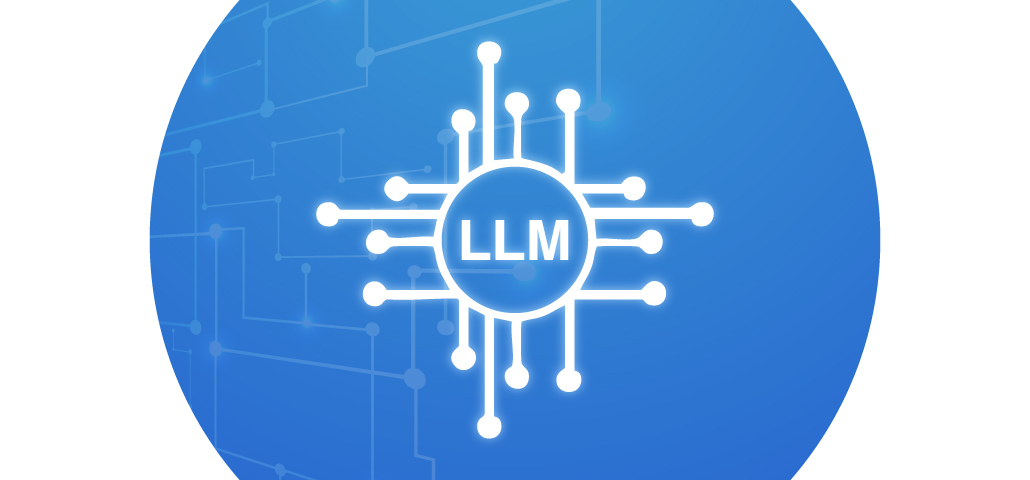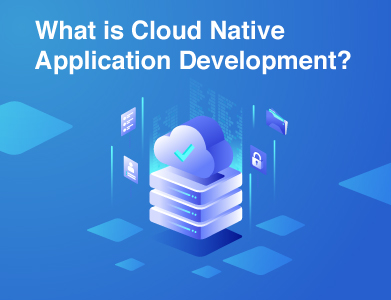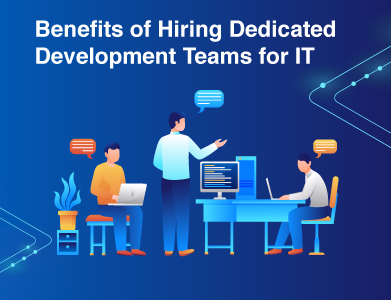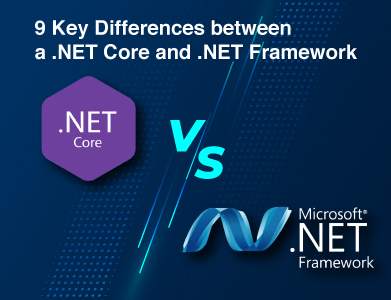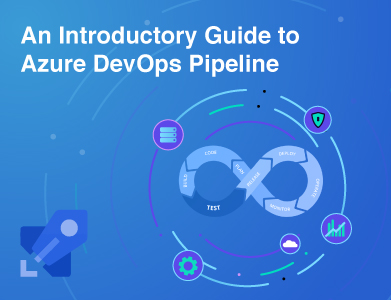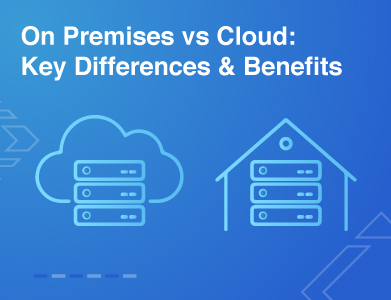Expertise
Large Language Models are changing how work gets done. They don’t complain, they don’t get bored, and they’re surprisingly good at things people find annoying like writing reports or answering the same question for the tenth time.
Jokes aside, Large Language Models (LLMs) are advanced AI tools that can understand and generate human language. They’re becoming increasingly important across many industries because they help businesses work faster and smarter. From automating customer service to generating reports and analyzing data, LLMs are helping companies save time, cut costs, and make better decisions.
However, their use also brings challenges, especially around fairness, accuracy, and ethical concerns. As these tools continue to improve, companies must focus on using them responsibly and effectively.
What is an LLM?
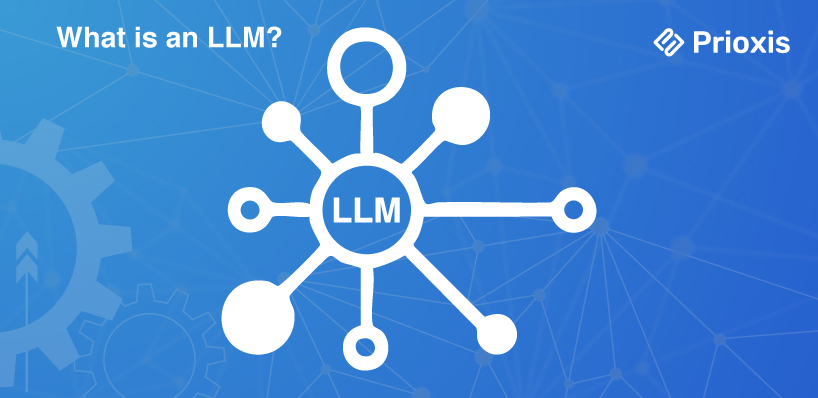
Large language models (LLMs) are advanced AI tools that work with human language. They have been trained on vast amounts of text, which allows them to recognize patterns in how people communicate. As a result, they can generate written responses, summarize information, translate content, and assist with a wide range of language-based tasks.
For a business leader, the value lies in efficiency and scale. These models can support customer service, automate document creation, assist in research, and even help with decision-making by quickly analyzing and presenting information in a clear format.
They don’t “think” like humans, but they can process and respond to language inputs in a way that feels natural and intelligent. Their strength is speed, consistency, and the ability to handle large volumes of information without fatigue.
In short, large language models are practical tools for making communication and information handling faster and smarter across the business.
Large language models took a major step forward in 2017 with the introduction of a new type of AI design called the transformer. This was a shift that allowed models to handle language more effectively and on a much larger scale.
Two key breakthroughs made this possible.
First is self-attention. This allows the model to focus only on the most relevant parts of the input rather than treating all words equally. It helps the model understand relationships between words, even if they are far apart in a sentence. For example, in a complex legal document or a customer email, the model can identify which words or phrases matter most for accurate interpretation.
Second is positional encoding. This gives the model a sense of order. Since the input isn’t processed one word at a time in a strict sequence, positional encoding helps the model understand where each word belongs in a sentence or paragraph. This makes it better at capturing context and meaning.
Together, these innovations allow large language models to handle language tasks more accurately and flexibly. As a result, they’re becoming highly effective business tools — from automating reports and analyzing customer feedback to supporting internal communication and improving knowledge management.
These models don’t just process language. They help businesses extract insight, save time, and reduce manual work in a wide range of text-heavy areas.
Top LLM Use Cases and Practical LLM Applications
Large language models are becoming practical tools for everyday business needs. Rather than being limited to research labs or tech teams, they are now helping organizations solve real problems, save time, and improve how work gets done. Whether used behind the scenes or in customer-facing roles, these models are showing clear value across different functions. Here are some of the most useful and relevant large language models use cases businesses are applying them today.
1. Customer Experience and Support: Chatbots & Virtual Assistants
Customer support is often the most frequent point of contact between a business and its clients. When that experience is slow, inconsistent, or frustrating, it reflects directly on the brand. Large language models offer a practical way to improve both the speed and quality of service.
Instead of relying on rule-based chatbots that follow scripts, companies are using LLMs to create assistants that understand language in a more flexible, human-like way. These assistants can interpret different ways of asking the same question, keep track of context in a conversation, and respond with clarity and relevance. This helps customers get the answers they need without being transferred between departments or waiting in long queues.
The technology also works behind the scenes. LLMs can support live agents by summarizing past interactions, suggesting responses, or pulling information from internal systems in real time. That reduces resolution time and allows teams to handle more cases without compromising service quality.
The result is a more efficient support function that scales easily, delivers a consistent experience across channels, and frees up human agents to focus on higher-value tasks.
2. Content Generation
Every business wants to sound sharp, relevant, and consistent—but keeping up with the never-ending need for content is a full-time job. Blog posts, emails, reports, internal guides, product blurbs, thought leadership pieces... it adds up fast. Large language models provide a practical way to meet that demand without overloading teams.
Unlike templated tools, these models generate content that adapts to tone, purpose, and audience. They can also take existing materials and reframe them for different formats or platforms, helping teams repurpose content more efficiently.
For fast-moving environments, this means being able to respond quickly to new opportunities or market developments without compromising on quality. Teams can use LLMs to generate first drafts, brainstorm ideas, or refine messaging all while maintaining alignment with brand voice and strategic goals.
When used thoughtfully, LLM development has become an extension of the content team: accelerating workflows, improving consistency, and freeing up time for higher-level thinking and review.
3. Translation and Localization
When a business enters new markets, communication is often one of the first operational challenges. It is not just about converting words from one language to another. The message has to make sense in the local context and align with customer expectations in that region.
Large language models help companies do this more efficiently. Instead of managing multiple disconnected translation workflows, teams can use LLMs to produce localized content at scale. These models account for tone, phrasing, and cultural differences, which improves how messages are received.
This is particularly useful for marketing, product content, and customer service. It also helps reduce turnaround time and cost, especially in cases where speed to market matters. More importantly, it supports consistency. When content is generated from the same source logic across languages, there is less risk of misalignment between regions.
For businesses expanding internationally, this simplifies communication workflows and supports faster deployment of region-specific materials without overextending internal resources.
4. Sentiment Analysis
Businesses collect large volumes of feedback from customers, but much of it is unstructured. Reviews, survey comments, support tickets, and social media posts often contain useful signals, but they are difficult to process at scale. Large language models help extract meaning from this data in a structured, usable way.
LLMs can evaluate text for tone, intent, and recurring themes. This allows teams to understand how customers feel about specific products, services, or experiences without manually reviewing thousands of entries. Patterns that typically take weeks to identify through manual analysis can surface in real time.
This has practical implications across functions. Product teams can track how sentiment changes after a feature release. Customer service can identify pain points before they escalate. Marketing can see which messages resonate with specific segments.
Instead of reacting to feedback after the fact, businesses can use sentiment analysis to respond earlier, prioritize issues more effectively, and make decisions backed by a broader set of customer insights.
5. Education and Research
Access to relevant, up-to-date information is a major advantage in both academic and corporate settings. The challenge is not availability, but volume. It takes time to find, read, and interpret large bodies of content. Large language models help streamline that process by making information more accessible and easier to work with.
LLMs can summarize complex research papers, extract key insights from long documents, and surface relevant material based on a specific query. This applies to internal knowledge bases as well as public sources. Teams can use these capabilities to reduce time spent searching for information and increase the speed of analysis.
In education, LLMs support personalized learning by adjusting content based on the user’s level of understanding. In corporate environments, they help subject matter experts, analysts, and strategists stay current without getting buried in data.
This leads to faster onboarding, more informed decisions, and a more efficient way to manage institutional knowledge.
LLM Applications in Different Industries
Large language models are not plug-and-play solutions. Their value depends on how well they are aligned with operational realities. In each industry below, the focus is on how LLMs address real friction—things like bottlenecks in communication, inefficiencies in repetitive tasks, or slow access to information that affects decisions and service delivery.
LLM in Healthcare
Documentation Overload
In most healthcare settings, clinicians spend as much time on documentation as they do on patient care. Writing referral letters, summarizing visits, and preparing discharge notes creates a major backlog. LLMs are now being integrated to generate structured drafts based on bullet points or transcripts. This shortens documentation time and standardizes language for compliance, which also helps downstream billing and audit functions.
Information Retrieval
Medical staff often need to locate specific data buried in dense clinical records or published studies. Manually reviewing long documents or searching across fragmented systems is inefficient. LLMs support this by extracting key details from large datasets—clinical guidelines, research articles, case notes—so practitioners can access critical insights without digging.
Front-desk Inefficiencies
Administrative teams are frequently tied up answering repetitive patient queries, resending forms, or managing appointment logistics. LLMs support these workflows by powering patient-facing tools that automate responses while pulling data from internal systems. This improves responsiveness and reduces manual coordination work for staff.
Ecommerce
High-volume Content Operations
For retailers managing hundreds or thousands of SKUs, keeping product listings up to date across platforms is resource intensive. LLMs help by generating accurate, brand-aligned product descriptions, promotional copy, and localized variations. This allows content teams to scale faster without losing quality or consistency.
Customer Query Resolution
Support teams face large volumes of order-related inquiries, often involving simple questions about tracking, return policies, or product specs. Handling these manually limits responsiveness. LLMs provide dynamic support that understands a customer's intent and delivers context-specific answers, which reduces handovers and improves first-contact resolution.
Search that Understands Customers
Customers often describe what they want in vague or incomplete terms. Traditional keyword search can’t handle that. LLMs improve product discovery by interpreting natural language and adjusting for phrasing differences. This leads to more relevant results and fewer drop-offs during the browsing journey.
Finance
Client Onboarding Delays
Bringing a client onboard involves reviewing multiple documents—KYC forms, policy agreements, risk disclosures—all of which require human oversight. LLMs are now being used to pre-process these materials, flag missing data, summarize clauses, and auto-generate standard client communications. This reduces cycle times and frees up compliance officers for exception handling.
Information Bottlenecks for Analysts
Financial analysts deal with dense documents like earnings call transcripts, investor briefings, and regulatory reports. Reviewing these manually slows down response time and limits the ability to spot trends early. LLMs surface key points and extract structured insights, allowing analysts to focus on interpretation rather than information gathering.
Consistency in Regulated Client Communication
In high-trust environments, inconsistent answers lead to risk. LLMs assist frontline staff in generating compliant, clear responses to complex client questions—whether about fees, terms, or procedures. This reduces escalation volume and supports better audit trails without slowing down the response process.
Conclusion
LLMs ability to handle high-volume, language-based tasks with speed and consistency makes them uniquely suited for areas where traditional systems fall short.
From automating frontline support and generating customer-facing content to reviewing documents and analyzing feedback, LLM applications are helping companies reduce manual workload, improve response times, and make better use of their internal data. These Large Language Models use cases are already delivering measurable value in industries like healthcare, ecommerce, and finance—especially when applied to high-friction, high-repetition processes.
That said, successful implementation requires more than just plugging in a model. It takes careful alignment with business goals, the right data context, and thoughtful guardrails to ensure quality and control. This is where deep domain expertise matters.
With our experience in LLM development, businesses can move from experimentation to real, production-ready impact. Whether the need is customer service automation, multilingual content delivery, internal knowledge management, or intelligent document processing, it’s possible to build workflows that are efficient, scalable, and tailored to your specific operations with our LLM development services.
To explore how LLMs can fit into your business, connect with Prioxis. Our team helps translate LLM potential into practical results.
